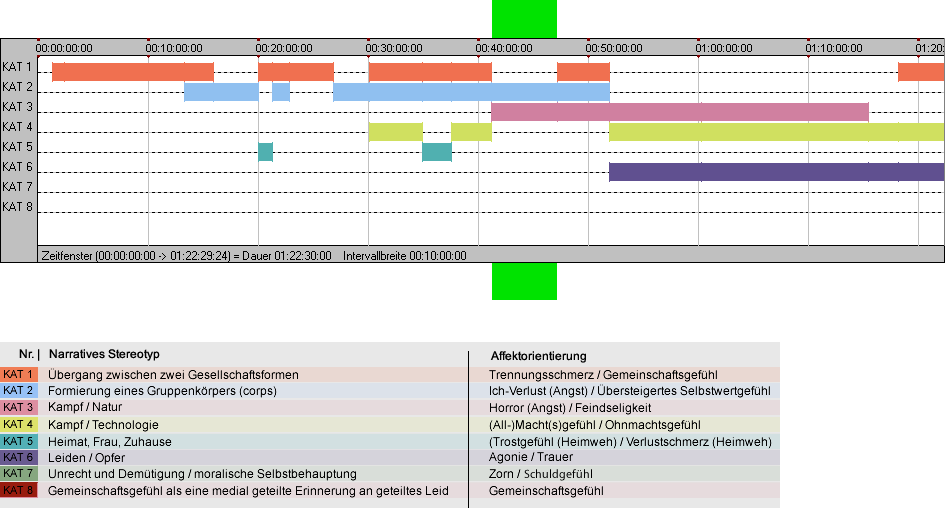Submarine under attack*
Classification in categories
- Formation of a group body (corps)
- Battle and nature


Metadata
Number: 12
Individual analysis: Gung Ho!*
Timecode start: 00:41:13:07
Timecode end: 00:47:12:02
Year of origin: 1943
Through the interplay of the camera and the sound design, the scene unfolds the process of collectively surmounting a state of alert. It passes, in the main, through the stages alert, worry, fear, panic and finally relief. This step by step process is accomplished on the temporal level as a repetition of contraction on the one hand and through movement of fleeing on the exterior—the forgotten soldier and the enemy (Japanese)—on the other hand.
In the film’s dramaturgical structure this scene follows > “Briefing in the submarine“. The collective desire to fight just created is developed in this scene as a common process of the experience of renewed and strengthened solidarity in a community that shares a common “life or death” destiny. Thus the map shown at the beginning, which provides spatialization in a topographical and temporal context, marks the present position within the phases of creating group solidarity on the way to its goal.
At the beginning, the alert is staged through the interplay of the editing with the camera pan and the sound design—loud announcement and sirens. The symmetrical form of the soldiers’ movements becomes a contracting movement of evacuation on the deck and then moves to the confined space of the sleeping quarters, which can be characterized as a figuration of suction (>EMU 1). In contrast to this contracting movement in the submarine, there is a staging of a separated soldier fighting the masses of water outside on the submarine – a movement of resistance that differentiates itself from the vertical vector of the collective movement of the submarine. In the series of movements from the submarine sinking to rising and again to sinking, the rescue “no man left behind” overlaps with the collective flight from the Japanese fighter planes. The curve of suspense is created through the interplay of the accelerated parallel editing and the change in musical rhythm. The curve of suspense correlates with the change in the vertical vector of the submarine’s movement—sinking and rising. In this way the tense attention to the life and death of an individual is shifted to the life and death of the collective in the submarine (threatened by the Japanese planes;> EMU 2) The culminated staged moment of tension is now replaced by a short image of the calm interior space and the relaxed soldiers. But this is immediately followed by the changes in the mood in stages from increasing fear, to panic, to relief, created by continuous parallel editing of the audiovisual interaction of the exploding bombs and their effect on the interior space of the submarine. Changes in these stages are marked by changes from shaky and steady images, light and dark contrasts and the developments in the facial expressions of the soldiers (> EMU 3). HJC
Expressive movement units
01 02 03Materials about the scene
Position of scene in film





